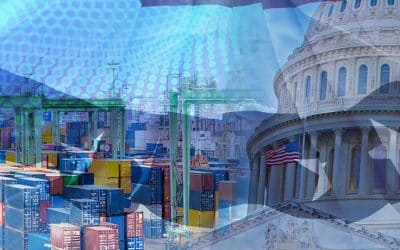The dollar's hegemony under scrutiny

Redacción Mapfre
The US dollar’s role as the world’s reserve currency, historically underpinned by institutional credibility, financial depth, and trade dominance, is now facing mounting structural challenges that go beyond short-term economic fluctuations. For decades, this privileged position has allowed the United States to issue debt in its own currency, maintain a high degree of monetary independence, and exert significant influence over global markets. However, in today's environment, marked by the deterioration of US public finances, geopolitical competition, and a reshaping of global value chains, there are emerging signals that point to an erosion of the dollar's dominance.
From a structural standpoint, a number of domestic and international factors are chipping away at the dollar’s central role. Domestically, the continued rise in the primary budget deficit, a high public debt burden (over 130% of GDP), reliance on external financing, and growing political polarization—with recurring standoffs over the debt ceiling—are fueling concerns about the long-term sustainability of US public finances. On top of all this, there’s a growing perception of systemic risk stemming from potential institutional disruption. This has already triggered credit rating downgrades and driven up the risk premiums demanded by financial markets.
Externally, central banks and sovereign wealth funds are gradually diversifying their reserve holdings, reducing exposure to the dollar in favor of other currencies, such as the euro, the yuan, or even gold. This trend has accelerated in response to unilateral policy decisions—such as using the global financial system as a geopolitical tool through sanctions or restricting access to the SWIFT network—that have increased the perception of risk associated with the dollar's dominance. At the same time, the rise of sovereign digital currencies and bilateral agreements using local currencies are reinforcing this trend, signaling the emergence of a more multipolar global financial landscape.
From an empirical perspective, recent developments in the financial markets lend further support to this view. One of the most notable examples was the triple capital flight recorded in 2020, when investors simultaneously withdrew from both stock market assets and US government debt, while the dollar depreciated against other currencies. This behavior deviates from the traditional "flight to safety" phenomenon, where investors typically flock to dollar-denominated assets, and it can be seen as an early warning sign of a loss of systemic confidence in the economic and financial leadership of the US.
While an immediate replacement of the dollar as the dominant reserve currency remains unlikely, the prospect of a gradual erosion of its prominence in favor of a more diversified financial architecture—one that includes regional currencies and functional segmentation by asset type (commercial, financial, reserve)—is becoming increasingly plausible. Such a transition would have far-reaching implications for the stability of global financial flows, the transmission of monetary policy, the structure of international portfolios, the pricing of commodities, and even the design of the international monetary system itself.



